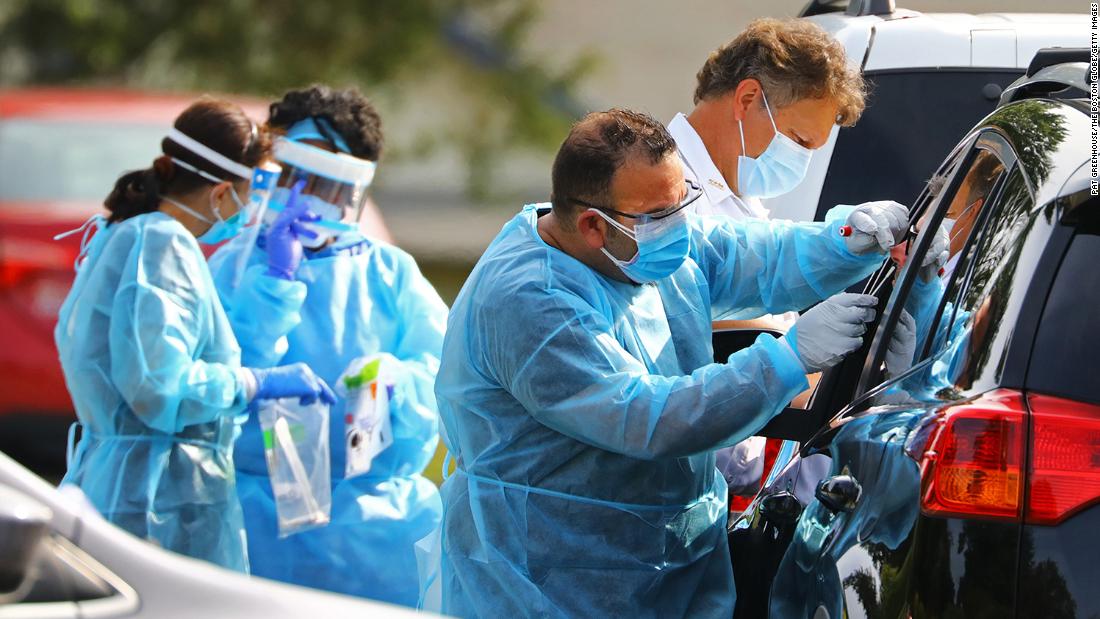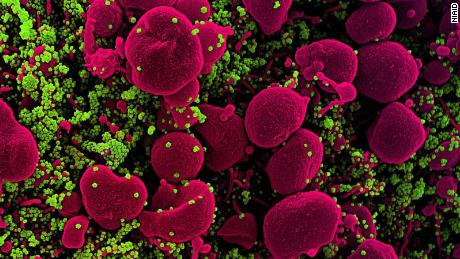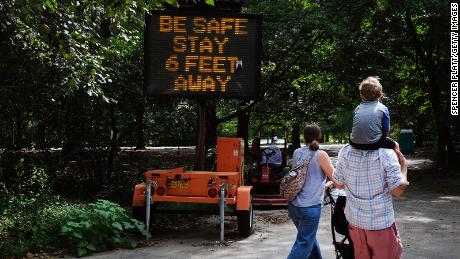As doctors worry about ‘a very apocalyptic fall,’ the CDC changes info on how Covid-19 spreads (again)
“We may be in for a very apocalyptic fall, I’m sorry to say,” said Dr. Peter Hotez, dean of the National School of Tropical Medicine at Baylor College of Medicine.
“And it’s happening because we’re forcing schools to reopen in areas of high transmission. We’re forcing colleges to reopen, and we don’t have the leadership nationally, telling people to wear masks and to social distance and do all the things we need to do.”
Dr. Jeanne Marrazzo, director of the division of infectious diseases at the University of Alabama at Birmingham, said she agrees this fall “could be apocalyptic” after recent spikes.
“Why are we going back up? I think there are a few reasons,” Marrazzo said,
“One is that there is general fatigue. People are really tired of this,” she said. “And then the second thing is … the completely contradictory messages that we’re getting — not just the misinformation, but also the confusion about how things are spread.”
“There is growing evidence that droplets and airborne particles can remain suspended in the air and be breathed in by others, and travel distances beyond 6 feet,” the CDC’s website said in an update Friday. “In general, indoor environments without good ventilation increase this risk.”
“The updated guidance would have been fine if it came out last May,” Hotez said. “We knew all of these things months ago.”
“The fact that they retracted this, even though this is common scientific knowledge at this point, one has to wonder what’s behind it,” said Dr. Leana Wen, a CNN medical analyst and an emergency physician at George Washington University.
“Was there political pressure? Political interference that’s driving this rather than science?”
The removal was not the result of political pressure, according to a federal official familiar with the situation.
“This was totally the CDC’s doing,” the official said. “It was posted by mistake. It wasn’t ready to be posted.”
The official said the guideline change was published without first being thoroughly reviewed by CDC experts.
“Somebody hit the button and shouldn’t have,” the official said.
The official added that the guidance is “getting revised,” but didn’t say when the revision would be posted to the CDC’s website.
“A draft version of proposed changes to these recommendations was posted in error to the agency’s official website,” CDC spokesman Jason McDonald said in an email to CNN.
“CDC is currently updating its recommendations regarding airborne transmission of SARS-CoV-2 (the virus that causes COVID-19). Once this process has been completed, the update language will be posted.”
Where Covid-19 cases are rising and falling
As of Monday, 28 states had more new cases this past week compared to the previous week, according to Johns Hopkins data.
Sixteen states are holding steady, and only six states are showing declines in new cases: Delaware, Hawaii, Louisiana, Michigan, South Carolina and Vermont.
But it’s not just the raw numbers of new cases that the public should pay attention to. It’s also the test positivity rates — the percentage of tests taken that turn out to be positive.
The World Health Organization (WHO) has advised governments maintain test positivity rates at or below 5% for at least two weeks before businesses reopen.
On the other end of the spectrum, five states have test positivity rates lower than 1% — Maine, Vermont, Massachusetts, New Hampshire and New York.
The race for a (safe and effective) vaccine
But Moncef Slaoui, chief adviser to Operation Warp Speed, told CNBC Monday that “we are pretty close” to having a vaccine for Covid-19.
Operation Warp Speed is the federal government’s effort to speed development of drugs, vaccines and other measures to fight the coronavirus pandemic.
At least three vaccines are in Phase 3 clinical trials in the US. Slaoui said it’s possible vaccine efficacy could be determined between October and January.
“The longer we wait, the more likely,” Slaoui said.
If approval or authorization is granted by November or December, “we may be able, for instance, to immunize the most susceptible populations in the US by December of 2020,” Slaoui said.
“Most of the elderly population and first-line workers in January of 2021, and the rest of the US population progressively in the month of February, March and April,” Slaoui said.
CNN’s Elizabeth Cohen, Steve Almasy, Naomi Thomas and Jamie Gumbrecht contributed to this report.
![]()








